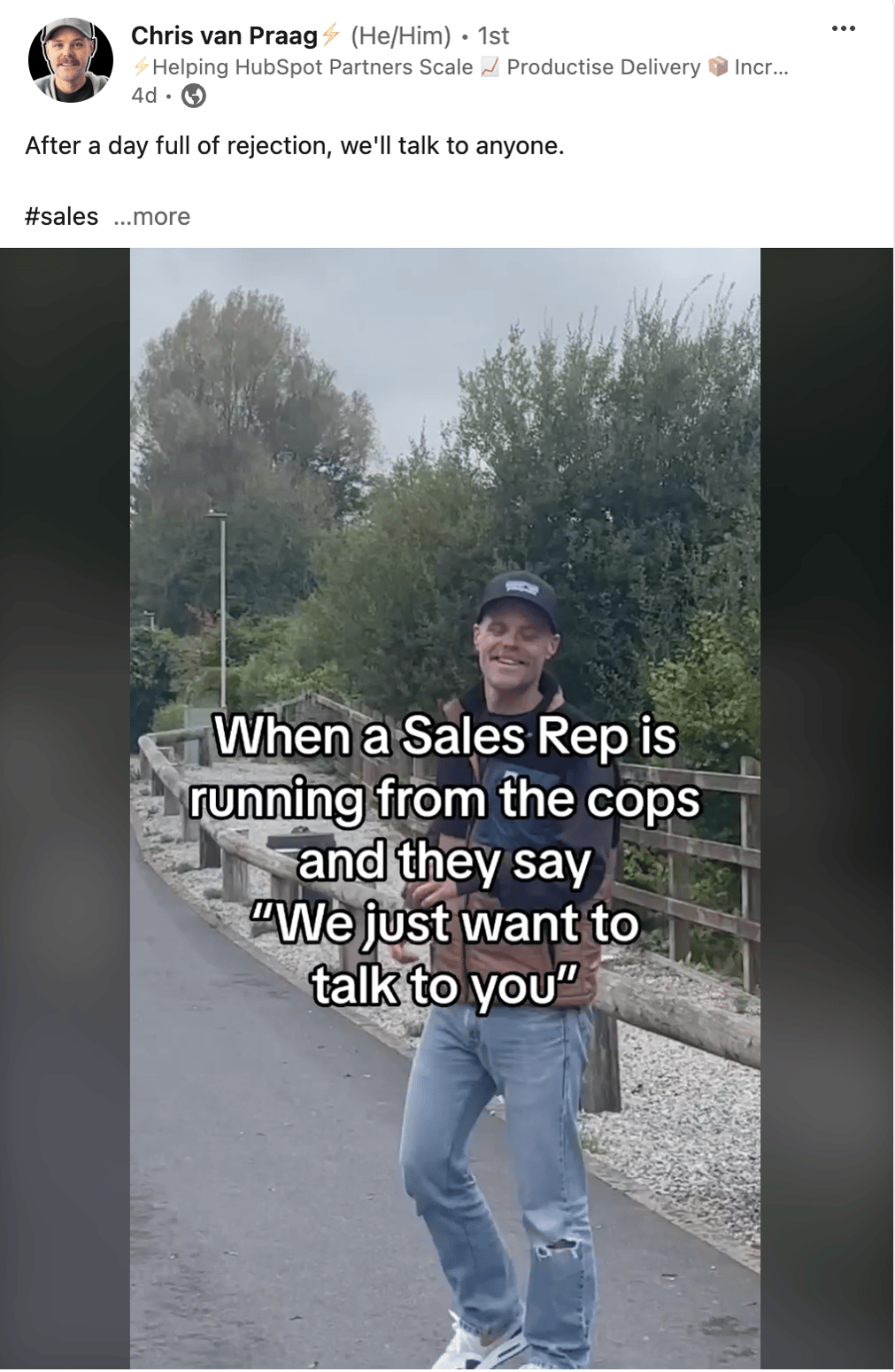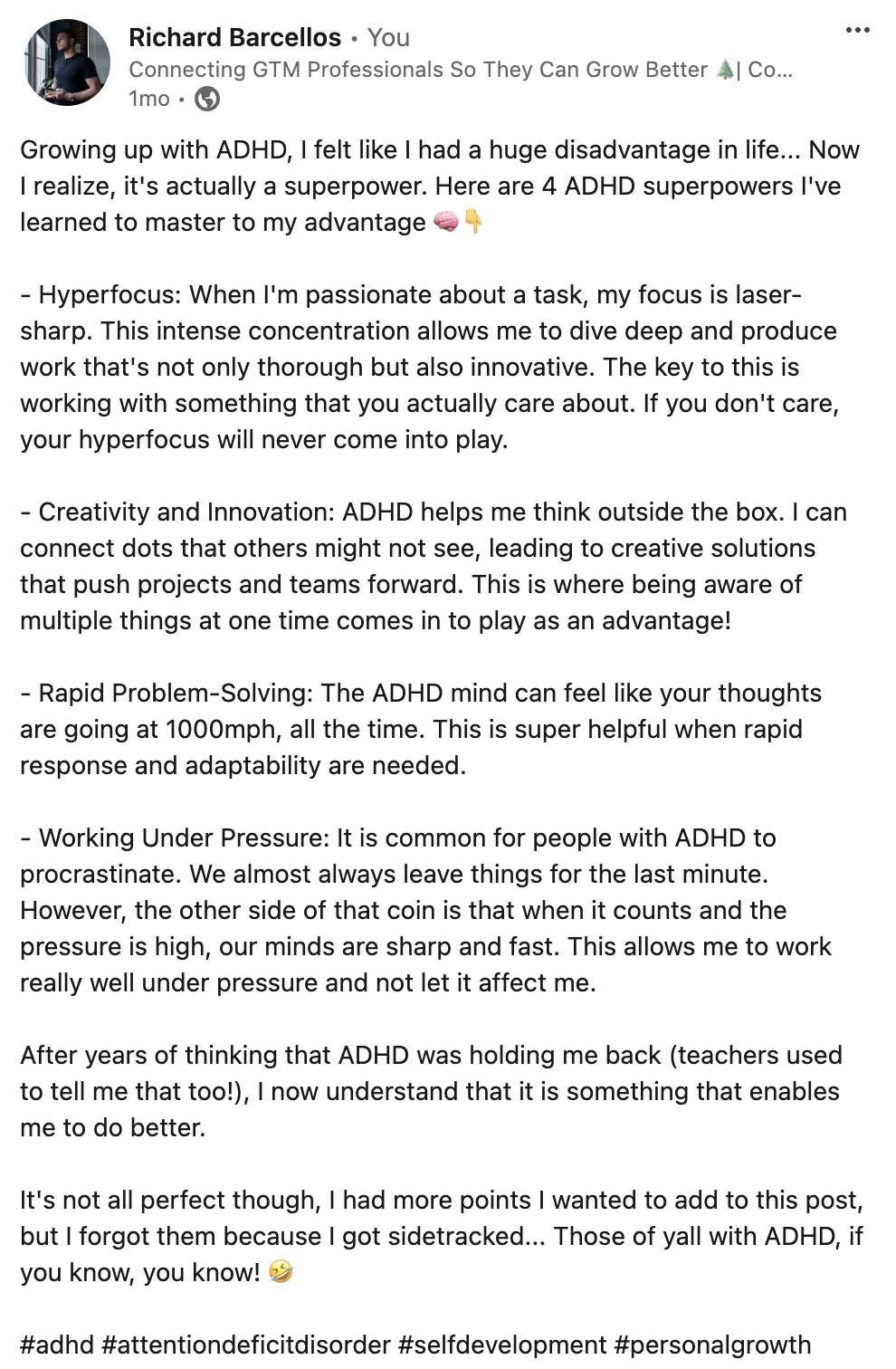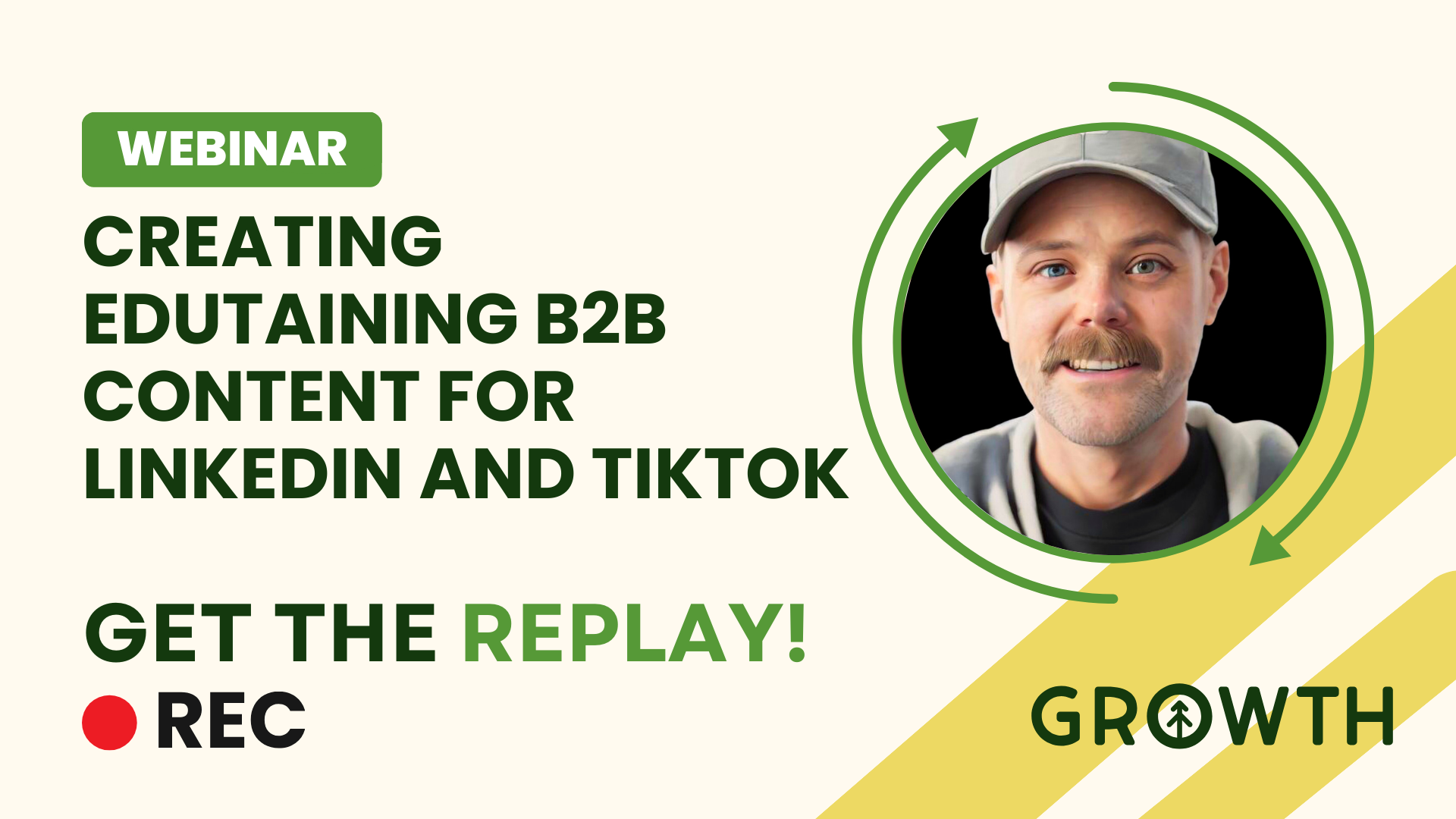You know what’s wild? B2B content doesn’t have to be boring. Yet, we see it all the time: stiff, formal posts that no one wants to read or watch. It’s like we forget we’re still talking to people, not robots.
Here’s the truth: your audience craves more than dry facts. They want content that’s fun, engaging, and yes—even memorable. The good news? It’s possible to create this kind of content and still keep things professional.
In this guide, we’re diving into ways to make your B2B content shine. We’ll cover how to mix creativity, storytelling, and consistency to create content that stands out. The guide is packed with tips from our latest Micro Lesson featuring Chris Van Praag, an expert B2B content creator. By the end, you’ll be ready to shake things up and make LinkedIn fun again. Let’s do this!
Why B2B Content Gets a Bad Rap
Let’s be real: B2B content doesn’t always have the best reputation. People assume it’s all boring presentations, endless stats, and zero personality. But B2B marketing doesn’t have to feel like a chore—let’s dig into why it often does and how we can flip the script.
Understanding the Stereotype
B2B content is often stiff because it tries too hard to be professional. The focus tends to be on features, numbers, and sounding smart. But in reality, this style forgets one thing—your audience is still human.
The result? Content that feels like a sales pitch no one wants to hear. Chris even mentioned in the session how his early videos were “boring” because they mimicked dry case studies. They had lots of jargon but lacked personality or fun.
The Shift in Audience Expectations
Today’s B2B audience expects more. They want content that’s real, relatable, and maybe even fun. It’s no longer enough to just push out product features and benefits.
People want to connect with brands that feel authentic and human. Chris emphasized that showing you’re a person, not just a salesperson, is key. That shift is what makes people want to engage, not just scroll past.
Make Your Content Memorable with Humor & Creativity
If you want people to remember your content, it can’t just blend in. You have to stand out by making it fun, relatable, and creative. Let’s talk about how humor and creativity can make your B2B content unforgettable.
The Power of Humor
Humor is a game-changer in B2B content. It grabs attention, breaks the mold, and makes your brand more approachable. As Chris said, his early videos didn’t really take off until he started having fun with them.

Instead of just selling, he focused on being memorable. A little humor goes a long way—whether it’s through a clever skit or a simple, funny comment. Even in a professional space like LinkedIn, people appreciate content that doesn’t take itself too seriously.
Creative Formats to Try
You don’t need high-end production to get creative. Sometimes, the simplest formats work best. Chris mentioned how he started talking to himself in skits, playing different characters. These lighthearted, low-budget videos resonated more than dry case studies ever did.
Think about relatable situations in your industry and turn them into short, fun videos. For example, a parody of a team meeting, or even a skit about CRM headaches. Chris also recommends checking out creators like Tom Boston and Will Aitken—masters of making B2B content fun.
Tell a Story (and Have a Point!)
People connect with stories, not sales pitches. In B2B, storytelling lets you share your message in a way that feels relatable and human. It’s not just about your product; it’s about creating a journey your audience wants to follow.

Storytelling Over Sales Pitches
Forget the old approach of listing product features and hoping for the best. Instead, craft a story that showcases the challenges your audience faces and how you help solve them. As Chris pointed out, it’s not just about selling but showing you’re a real person.
Start with a problem your audience recognizes—something that makes them nod and think, "Yep, that's me." Then, lead them through the solution, but keep it subtle. No one wants to feel like they’re being sold to directly, especially not on LinkedIn.
Practical Tips for Storytelling in B2B Content
Make sure your content follows a clear structure: a beginning, a middle, and an end. Grab attention with a strong hook right at the start—what problem are you solving? Then, build tension or frustration, showing the pain points.
Finally, resolve it with a solution, but don’t make it a hard sell. Chris mentioned that people respond better to authentic, relatable content. So, whether you’re telling a story in a post or video, keep it simple, real, and human.
Be Consistent and Authentic
Consistency is the secret sauce for successful B2B content. People won’t remember one great post, but they will notice if you show up regularly. And when you do, authenticity is key—your audience can spot forced content from a mile away.
Consistency Is Key
Chris emphasized that one of the most important things he did was stay consistent. He admitted the quality of his videos varied over time, but his audience trusted him because he always showed up. Posting regularly builds momentum, even if you don’t hit it out of the park every time.
When you post consistently, your audience knows what to expect. Whether it’s weekly videos or daily LinkedIn posts, being reliable earns attention over time. Don’t stress about going viral—just focus on showing up.
How to Find Your Authentic Voice
Authenticity is about being you, not someone else. Chris shared that he didn’t want to just come off as a “salesperson.” He wanted to show people his personality, so they’d trust him as more than just a guy selling services.
To find your voice, think about what feels natural to you. Don’t copy someone else’s style exactly—use your own sense of humor or storytelling style. Whether you’re funny, thoughtful, or even a little quirky, let that shine through in your content.
Borrow Inspiration, But Make It Your Own
It’s totally fine to get inspired by what others are doing. In fact, borrowing ideas is a great way to kickstart your creativity. The trick is to take what you love and put your own spin on it, making it uniquely yours.
How to Get Inspired
Chris mentioned how he found inspiration from other creators on TikTok and LinkedIn. He’d see a skit or a funny style and think, “I can do that, but in my own way.” That’s the key—don’t just copy, adapt it to fit your message and audience.
For example, you might love a trending TikTok format but need to tailor it for a B2B context. Maybe you take a popular meme and relate it to a common struggle in your industry. It’s all about making sure your content resonates with your specific audience, while still keeping it fun and engaging.
Examples of Borrowing from Other Platforms
Chris gave a perfect example of using humor and skits to tackle otherwise dry B2B topics. You can easily apply this approach by reworking popular content styles from other platforms. For instance, take a TikTok trend like a “day in the life” video and adapt it to showcase a typical workday in your field.
Or try using a meme format to highlight common pain points your customers face. The idea is to keep the framework, but give it a B2B twist that will resonate with your professional audience. You’re borrowing, but you’re also making it work for your brand.
Engaging Visuals and Snappy Editing
In the world of B2B, visuals matter more than you might think. It’s not just about what you say; it’s how you say it. Engaging visuals and quick, snappy editing can turn a simple message into something memorable.
Keep It Short and Engaging
Attention spans are short—especially on LinkedIn. Chris shared how he keeps his videos under 60 seconds whenever possible. If you don’t capture your audience in the first few seconds, you’ve lost them.
So, keep it snappy! Cut out unnecessary pauses, and don’t be afraid to get straight to the point. Your content should have energy and flow, keeping viewers engaged from start to finish. Remember, short and engaging beats long and drawn-out every time.
Use Visuals to Your Advantage
You don’t need fancy equipment to make your content look good. As Chris mentioned, sometimes the best camera is your phone. What matters more is using good lighting and clear visuals to keep your audience focused.
If you want to go a step further, try simple green screens or quick cuts to add energy. Chris also recommends tools like CapCut and iMovie for editing—easy tools that anyone can use to tighten up their videos. A little effort with visuals and editing goes a long way in keeping your audience glued to the screen.
Make Your B2B Content Stand Out
By now, you’ve learned how to transform dry B2B content into engaging, memorable experiences that your audience will actually enjoy.
Remember, combining humor, storytelling, and consistent posting is key to capturing attention and building connections. Stay authentic, borrow inspiration, and keep your visuals sharp and snappy.
So, what are you waiting for? Start experimenting with these strategies today and bring your B2B content to life. If you want to pick up some tips, check out Chris Van Praag's Micro Lesson to learn how to create B2B content that is not boring! Your audience is ready for something fresh—now it's your turn to deliver!
